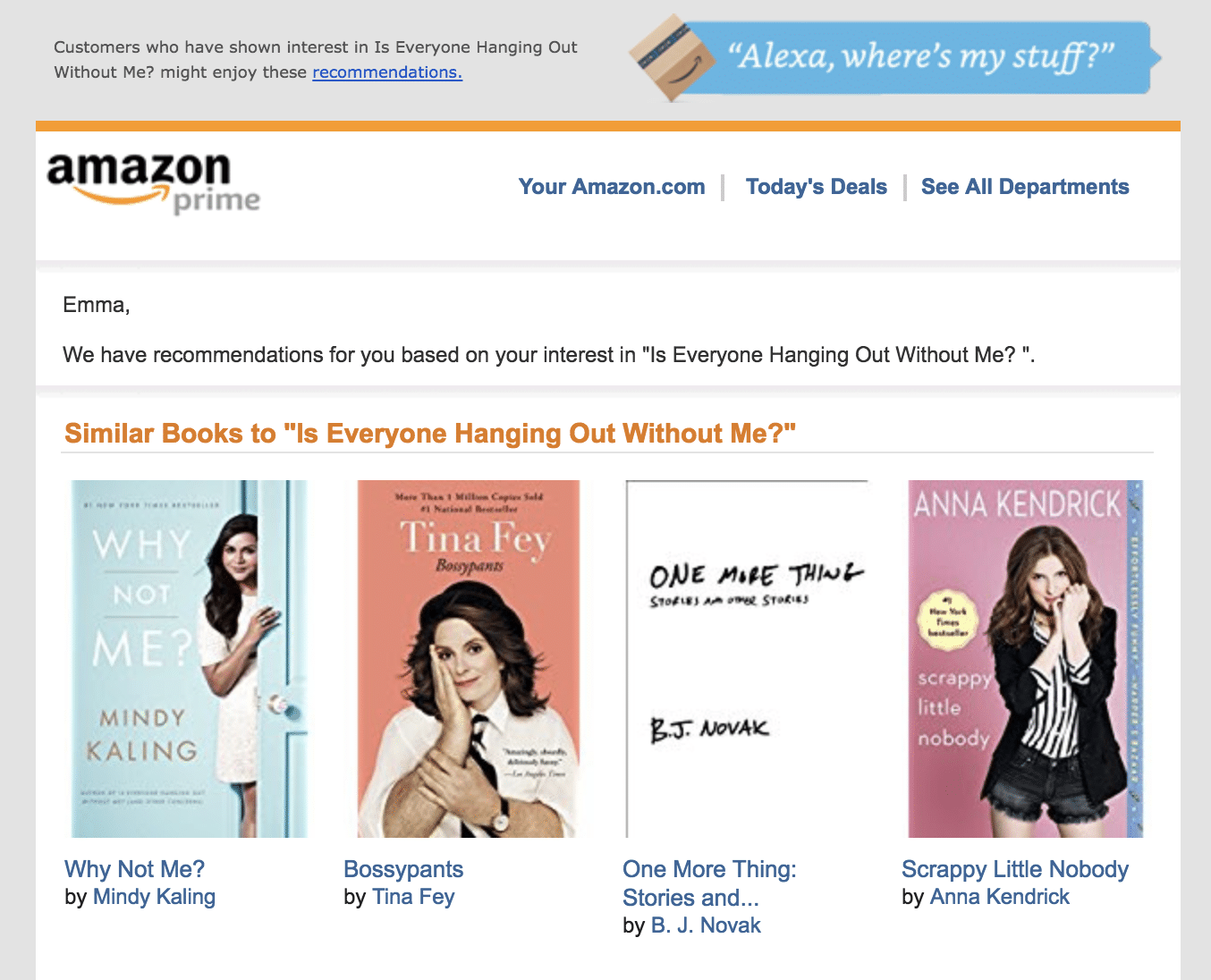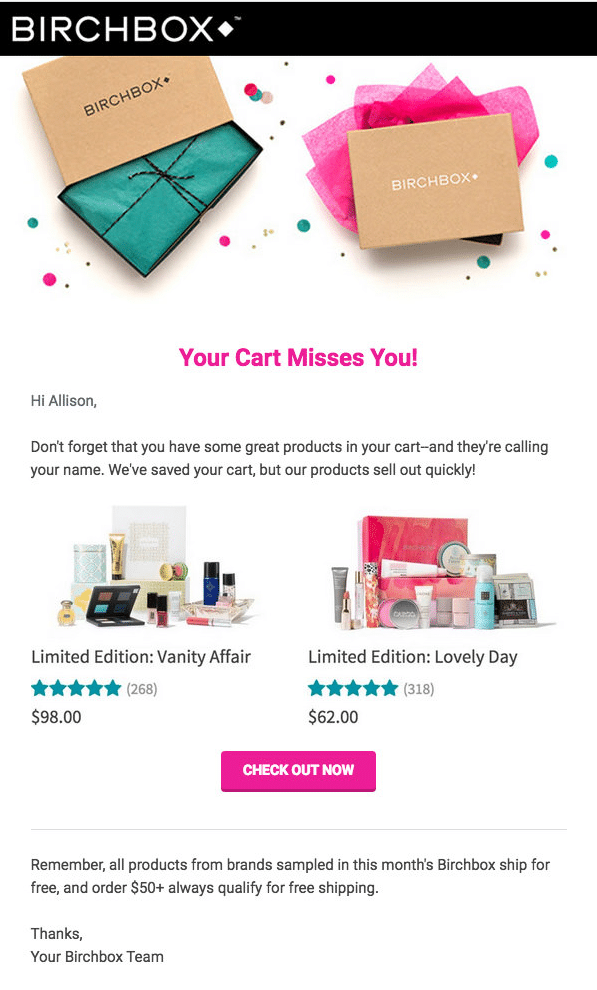When I was a little kid, I used to go along with my grandma to the bakery. It was one of those old-school bakeries with dim lights, wooden shelves, and just a few simple products that you could buy—bread, toasts, croissants, and other baked goods.
As a kid, I never understood why she went to that bakery when she could get better bread and lower prices at the supermarket next door. However, now I realize she went to that old-fashioned bakery for a reason: the people that ran that place knew exactly what my grandmother liked.
My grandmother only had to step a foot in that place, and they would always knew exactly what she’d buy. Not only that, but the bakers shared the same neighborhood as my grandmother, which made her feel like she was treated by friends, not salespeople.
Although this is a bit of an old-school example, it can be applied to online marketing. With the advent of the internet, people have an unlimited amount of options available. However, when there’s so many options, it’s tough to make a choice.
Overcoming the paradox of choice with personalization
When you have more choices, it can be tougher to make decisions. Barry Schwartz, the author of The Paradox of Choice, says: “As the number of choices grows further, the negatives escalate until we become overloaded. At this point, choice no longer liberates, but debilitates.”
To overcome the problem, online marketers are turning to personalization. By personalizing the experience, these retailers make online shoppers feel known, just like my grandmother did in her bakery.
But what is marketing personalization, and how can you use it to get results? Today, we’re sharing what you need to know about marketing personalization, how to use it, and what tools you can use to implement it.
What is marketing personalization?
Marketing personalization allows you to send customized content, whether that’s an article, a product offer, or a recommendation, to one of your visitors based on their characteristics and past behavior.
A study done by BrainSINS found recommended products get 73% more clicks than products that marketers chose to be included in a newsletter, and generate 46% more revenue than products that the marketers personally selected.
Marketing personalization works because, as the example of my grandmother, it delivers products that fit your customers’ needs and interests. It makes customer feel like you know and appreciate them.
For example, if a customer puts something in their cart and then abandons the cart for whatever reason, Asics will send a high quality reminder email urging the customer to return and complete the purchase.

The power of marketing personalization isn’t necessarily new, yet will deeply impact in the way people interact with online companies.
Alex Williams, Creative Director at Trendline Interactive, put it clearly in our predictions article: “new machine learning and data science-based features and platforms will give marketers the ability to harness their content and data to prophesize relevant information to mass audiences in a personal way.”
If you are tired of having your emails—or any of your other marketing communications, for that matter—ignored, marketing personalization represents a break in the way you deliver your content.
How to use marketing personalization
As it turns out, marketing personalization goes hand in hand with behavioral marketing.
While behavioral marketing allows you to segment your user base according to a type of behavior you want to target, marketing personalization allows you to find and deliver that content in the most targeted way possible.
For example, behavioral marketing would allow you to target your customer base based on those who already purchased three times from you in the past 90 days. On the other hand, marketing personalization would allow you automatically pick and recommend other similar products based on their specific purchases.
Finding and recommending similar products to the ones your customers bought is one of the ways you can use marketing personalization– and these recommendations should be automated. For example, Amazon makes recommendations based on past purchases.

3 ways you can leverage marketing personalization
Marketing personalization represents a way you deliver your content to your customers. With the help of some tools, you can personalize your visitors and customers’ experience in some of the following ways:
- Displaying a pop-up with specific content for specific visitor segments.
- Sending specific email campaigns based on specific segments.
- Customizing your website’s content by replacing a section of your site for another one.
Each of these modifications can transform the way you communicate with your customers, increasing your effectiveness and revenue.
1. Try targeted pop-ups
Some people don’t like pop-ups. That’s because some pop-ups make it impossible to enjoy the experience. However, the problem isn’t with pop-ups per se; rather it’s with how they get implemented.
If you ask your visitors to sign up for your newsletter when they are in a product page, they will ignore it. Why would you do that in the first place? But if you offer them a discount for a first purchase (assuming you know the visitor hasn’t made a purchase yet), they’ll be much more interested.
Incentivizing your visitors with targeted offers with the help of pop-ups will let you increase the number of subscribers as well as first-time customers.
For example, HostAdvice.com, the leading global portal for web hosting information, used an exit-intent pop-up in which they offered the visitors who were about to leave their site a trial for $0.01 (yes, one cent).
With the help of Optimonk, their pop-up got a conversion rate of 37%, and ended up increasing their sales by 340%.

Pop-ups work if you target the visitor’s intent with your message.
2. Send personalized email campaigns
It’s no secret to you that email marketing has the highest ROI of all marketing channels. The effectiveness of email marketing extends to marketing personalization: personalized emails are 26% more likely to be opened and 760% better at generating revenue.
Before you can use personalized marketing in your emails, you need to gather as much data as possible from the email subscriber. The data to gather can include gender, date of birth, age, products interested in, etc.
Fortunately, CampaignMonitor allows you to tailor your emails based on many data points, including the name (as you can see in the example below), the list to which they belong, and gender, among other things.

Another powerful way you can communicate with your customers is based on the interactions with your website. Just as you saw in the previous example with the pop-up, you can send different campaigns to your subscribers based on their past purchases, the number of purchases and their total transaction value, and more.
Finally, you can send an email to a visitor who has added a product to their cart but abandoned your site before they finished the purchase.

Remember: When asking people to sign up to your email list, ask for more than their name and email address. If possible, ask for other data points which will allow you to target your emails with greater detail.
3. Customize your website based on the visitor
Amazon will display different products based on the visitor. Fortunately, you can emulate such personalization with the help of tools like Monetate and Barilliance.
You can add or take certain parts out of your homepage like Amazon does, and adding upsells and cross-sells in your product pages.
For example, Barrilliance helped LG show personalized product recommendations in their over 800 product pages for all the countries they work with. In the case of LG Spain, the company shows their visitors product recommendations on every category and product page according to the preferences and intent of each visitor.

In a similar vein, FrontGate, an online retailer of furniture and home decor, used personalized marketing to determine the optimal location of their product recommendations on their category pages. After carrying out an A/B test to compare the results of the test with the control, Frontgate was able to realize a near-instant 10% click-through rate improvement.
Take the data you have about your users and customers, and use it to make their website experience more personal.
Wrap up
With the help of marketing personalization, you can take your customer’s data and use it to improve their experience without your direct intervention. There are an almost unlimited amount of ways you can use different types of personalized marketing. It’s time to get creative and start becoming more personal.





